Dateline – November 23, 2020 – Rowlett, Texas
This is a wildlife sighting confirmation fifteen years in the making. I’ve been investigating Mountain Lion reports in the DFW metroplex since I first began this website way back in 2005. Over that time I have received hundreds of accounts about Mountain Lions sightings here in Dallas/Fort Worth.
Most of these reports come from people who are very adamant about what they have seen. Because of this, I have made a real effort to investigate every account that seemed even remotely credible.
But there is much hearsay and rumor surrounding the possibility of Mountain Lions in North Texas. That often makes it very difficult to discern truth from fiction with regards to these big cats. I needed to filter out the noise so that my investigations would be as rigorous and reliable as possible. It has always been very important to me to report my findings in an accurate and objective way. Nobody wants to find a Mountain Lion in DFW more than I do, but when I did finally claim a confirmable sighting, it had to be the genuine article.
Over the years I put together a number of articles about the subject as I gained a better understanding of what it was actually going to take to verify a Mountain Lion sighting in the Dallas/Fort Worth area…
- ARE THERE MOUNTAIN LIONS IN THE DALLAS/FORT WORTH AREA?
- MOUNTAIN LIONS IN THE METROPLEX?
- NORTH TEXAS MOUNTAIN LION: IS IT OR ISN’T IT?
Most of the cases I looked into ended up as unresolved due to a lack of evidence. Those reports that did include evidence (pictures, tracks) almost always turned out to be Bobcats (which are very common all across the metroplex). Some were even determined to be misidentified House Cats, believe it or not. But in all that time, no actual Mountain Lions encounters were verified. Nothing really even came close.
The sighting in Rowlett was different.
Early on the morning of November 23 I started receiving messages regarding a new Mountain Lion sighting in Rowlett, Texas. The first report that came in contained pictures only—video screen grabs. These particular photographs were blurry and included nothing that would distinguish the cat from a Bobcat—no long tail and nothing to indicate scale. I was dismissive. Surely, this was just another misidentification.
Then I received a link to one of the now famous video recordings. In this footage the long tail was plainly visible, and the size of the animal was much easier to gauge as the big cat came swaggering by. I was stunned. After all these years, this seemed like this might finally be the real deal.
I quickly made arrangements to investigate, and by early afternoon I was on site. My buddy, Phil Plank, came along to help have a look around. Phil is an excellent naturalist. He has a sharp eye and an innate knack for knowing what to look for. He’s a talented guy when it comes to this kind of thing.
The first item on our punch list was to verify that this was indeed the location where the video was recorded. That was easily done. Afterwards we started having a look around to see if we could find any other supporting evidence.

Notice the storm sewer access to the left, and the row of trees in the distance…
both are clearly evident in the video
The ground here was generally not optimal for recording tracks. In most places it was either hard packed or loose and grainy. In spots that had recently been wet things looked a little better. It soon became apparent that this little wildlife corridor was a very busy place. Coyote tracks in particular were very easy to find. But if the big cat had been through here he had stayed on the hard packed trail and left no obvious tracks.
As always, I had a couple of trail cameras in my pack, and as we surveyed the property I began to see the possibility for setting a few camera traps. Even though I considered getting photographs of the big cat the longest of long-shots, I decided to leave behind a few trail cameras just in case. You can’t win if you don’t play. Sometimes lightning really does strike twice.
As I was setting up the cameras, Phil continued down to the lake shore for a quick look around. Within minutes he had spotted a set of unusual tracks by the water’s edge, and called me over for a look.
At this location the soil was soft, sandy, and wet—a great combination for receiving clear impressions. Sure enough what Phil had discovered looked like excellent candidate Mountain Lion tracks. The age of imprint was right. The size was right. And the configuration looked good. I laid down my tracking ruler and documented the finding in photographs.
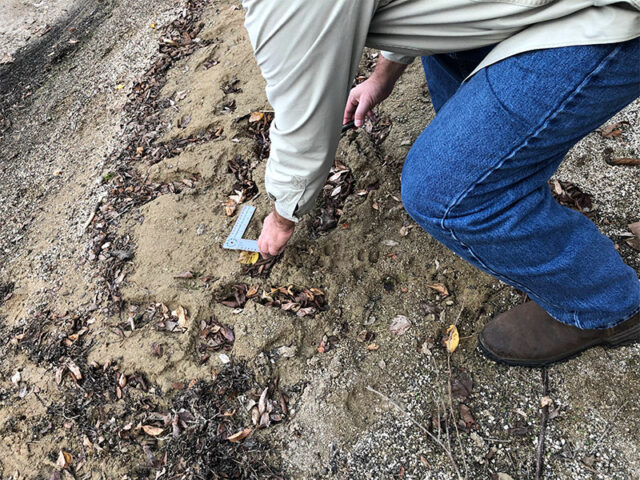
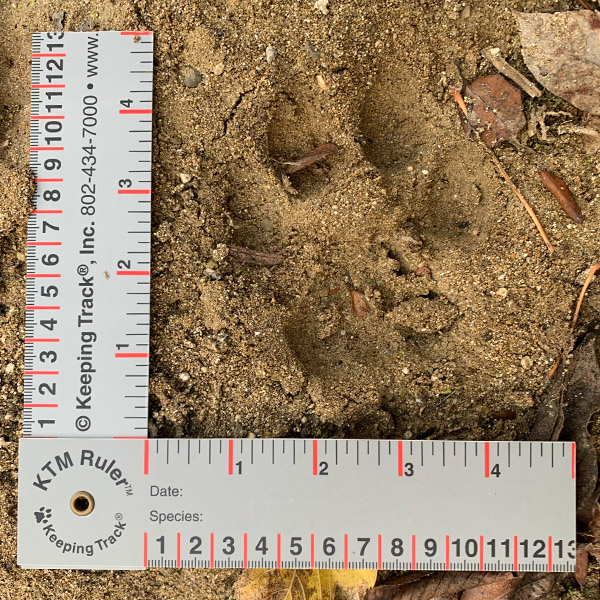
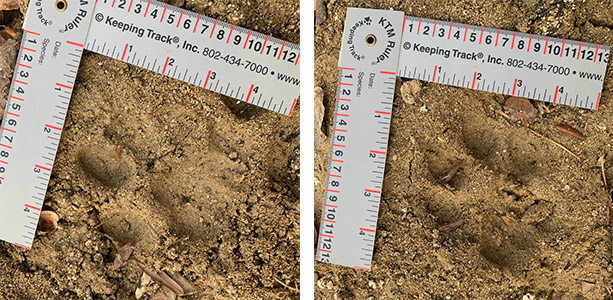
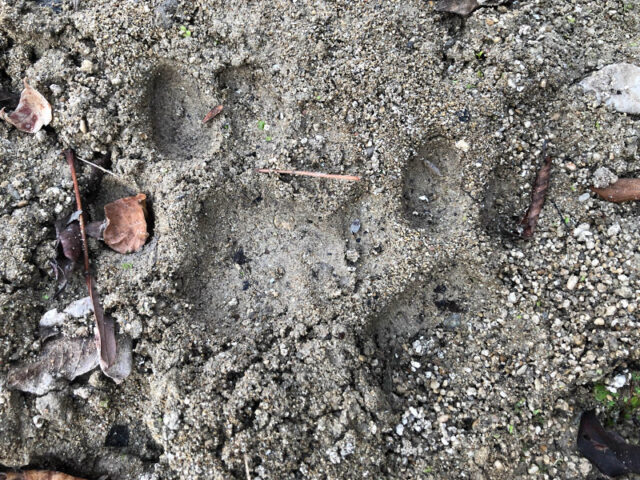

Under certain circumstances it can be difficult to differentiate Mountain Lion tracks from those of a large Dog… especially for the inexperienced. And, when it comes to tracking Mountain Lions, I am completely book-learned… As you might imagine, it has been a challenging skill set to develop here in the metroplex. So, while I felt pretty certain we had the confirmation we were looking for, I thought it would be best to run the tracks by an expert before making an announcement. Later that week, on Friday afternoon, I finally received the response I had been waiting for. The tracks were now confirmed by a tracking expert with over 40 years of experience as those of a Mountain Lion.
I posted the news to our Facebook Page, and the story soon went viral. A bona fide Mountain Lion right here in the Dallas/Fort Worth metroplex!
Texas Mountain Lions
The conventional wisdom holds that Mountain Lions in Texas are typically restricted to far West Texas and counties along the Rio Grande between the Trans Peco and the coast. Conflicts between male lions attempting to hold or establish territories is thought to be the primary mechanism that occasionally pushes cats into the more eastern parts of the state.
These transient young males can wander for miles each day in a quest for something they may never find. All the while they have to run a dangerous gauntlet, replete with hunters with itchy trigger fingers and dangerous highways to cross. Few of these Mountain Lions can be expected to survive the journey.

In the fifteen years that I have been investigating Mountain Lion sightings there have only been two other reports near DFW that I have been able to confirm independently. One big cat was killed by a hunter near Glen Rose in 2014, and the other was hit by a car just northwest or Mineral Wells in 2018. Both of these accounts seemed to meet the criterial of young male transients wandering far out of the Trans-Pecos.

Follow this link for more current information
There is a third report that I have so far not been able to verify. TPWD includes it on their sightings map, so it may be assumed to be legitimate as well. This 2018 sighting occurred in Grayson County just north of the metroplex on the Texas-Oklahoma border.
A Mountain Lion in Rowlett?
It’s not clear how best to explain a Mountain Lion on the Dalrock Peninsula. It doesn’t appear that there are adequate resources in this part of Rowlett to support a lion for long. The nearest undeveloped land with the space and resources required to provide for a Mountain Lion is likely 10 or more miles away through a gauntlet of suburban development and dense human population. A scenario that would bring a wild cat into this part of town is difficult to put together, but it’s not entirely out of the question.
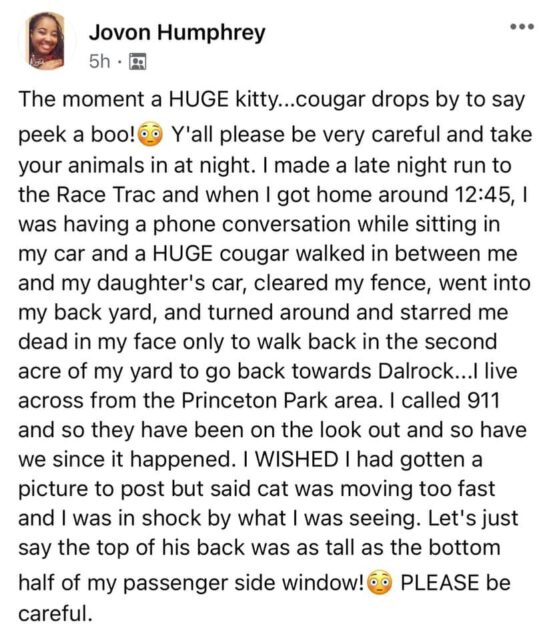
from Facebook
We can trace the lion’s route into Rowlett to a degree. There was an earlier sighting, that also appears to be legitimate. This report can offer some clues about where the cat may have come from.
Earlier on the same morning of November 22, another person spotted the Mountain Lion in a neighborhood around two miles north of where the video was recorded.
Together, these two sighting clearly show the Mountain Lion following a route south into the Dalrock peninsula.
So, how did the big cat get here in first place? There is speculation that this Mountain Lion is a young transient male dispersing in search of new territory. He may have found his way to Rowlett via a circuitous path leading through the more rural parts of Hunt County to the east. Another possibility—if the 2018 Grayson County sighting report is correct—is that this lion may be that lion. Finally, it is worth considering that the lion is a released or escaped captive. This may be the more likely explanation. An investigation into this sighting cannot be complete until this option is fully explored.
What’s Next?
The Rowlett Mountain Lion won’t be able to stay in this part of the metroplex for long. Adequate resources certainly do not exist. Plus it is very dangerous for the lion to stay. If he remains in the area for an extended period he is very likely to come into conflict with people. Ending up as roadkill is another real and likely possibility.

As expected, I never did get a trail camera picture of the big cat. I let my cameras run for seven days, and most of the photographs recorded were of the aforementioned Coyotes. The big cat had clearly moved on, and didn’t seem apt to return.
At the time of this writing its been over two weeks since the big cat was last seen. In that amount of time it is highly probably that he has made his way out of the Dalrock area. The question then becomes, where might he go next?
As this Mountain Lion attempts to exit the Dalrock peninsula there is no way to guess what happenstance might encourage him to choose one direction over the other. If he makes his way north and then back east in between Lake Ray Hubbard an Lake Lavon he will find himself in a very rural setting in short order. If, on the other hand, he travels in a more westward direction he will have many miles of dense suburban development to cross before he reaches the outskirts of urbanization. If that scenario turns out to be the case, then we may very well see the big cat a time or two more before this story plays itself out.
It is also said that Mountain Lions are strong swimmers. If true, that would open up a whole other set of routes the cat could take on his way out of Rowlett. There really is no telling where he might end up if he attempts to swim the lake.
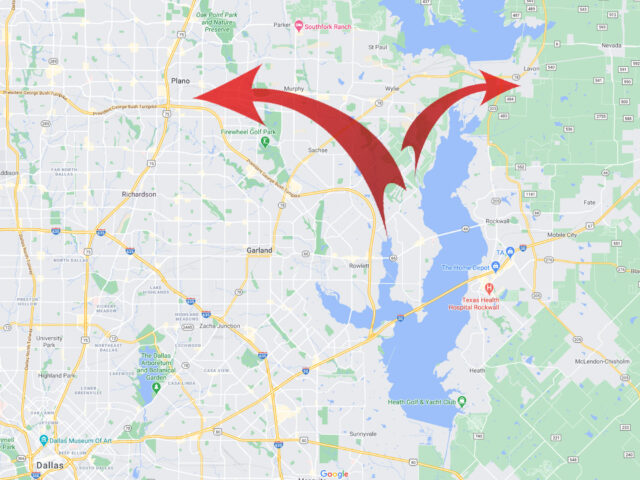
Lessons Learned
In places where there are resident Mountain Lions, people get pictures of them on a regular basis. Fifteen years without a confirmable sighting is an unexplainably long drought if these big cats really are as common in the metroplex as some believe.
Take this California-based Facebook Group for example: Ben Lomond Mountain Lion Journal. The mission of this group is to “the sharing of experiences in the San Lorenzo Valley and Bonny Doon areas with our local big cats.” As such, many new pictures and videos of Mountain Lions are shared every month. If we had resident—as opposed to the occasional transient—Mountain Lions living in DFW it would not require fifteen years to find conclusive evidence.
After years of unconfirmable sightings, it had become easy to be dismissal of new reports as they came in. Now that there has been a real Mountain Lion sighting documented in the Dallas/Fort Worth metroplex, we effectively have a reset. The calculus has changed.
It is certain that the steady stream of misidentifications and unconfirmable reports will continue. This sighting in Rowlett won’t change that dynamic. It may even be another fifteen years—or more—before another verifiable Mountain Lion sighting occurs again. But in spite of this, all future reports will need to be considered with a renewed earnestness going forward.


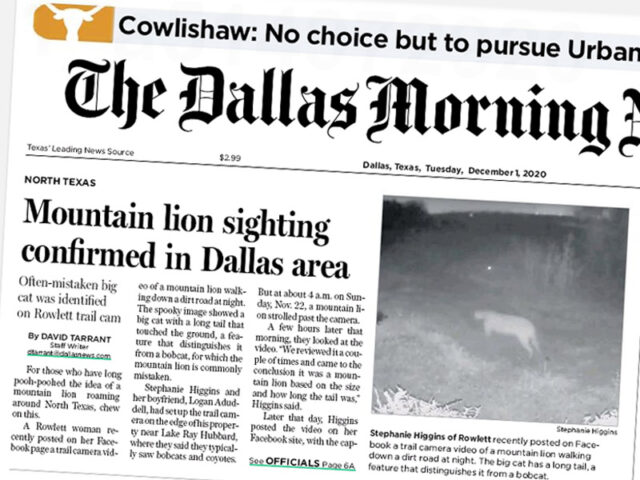

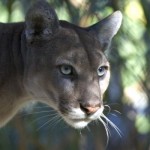
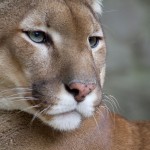
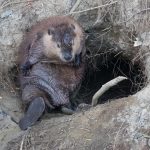

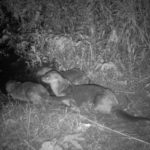
I live in a forest, creek setting in far NE Dallas county and have had a few neighbors (2) say they had a mountain line near their property. I believe these people. I have often wondered why you have been so adamant that these sightings were not a mountain lion. I believe these few rare reports in my area. Even heard the mountain lion “scream” at 3am one morning. My neighbor said she heard it as well.
There has now been another confirmed photograph of a mountain lion in the Metroplex, the second one in Collin County not far from the first one. Video of the lion was examined by TPW personnel and the image was identified as a mountain lion. It might be the same lion as the one in Dallas County.
Is there any further information on the claimed killing of a young man in Hood County by a mountain lion? I understand that the Tarrant County coroners office recorded the death as due to an attack by an animal, possibly a mountain lion, but that TPWD personnel who examined the attack site said there was no evidence of a mountain lion.
EDITOR’S NOTE: Hi David, Yes, I certainly agree that after a 100 year drought with no confirmed Mountain Lion sighting in DFW, two in close proximity in time and space most likely do represent the same animal. The only additional information I have about the Hood County case is that it has largely been debunked as a Mountain Lion attack. Here are some recent articles on both the confirmed Princeton sighting and the Hood County death…
https://dfw.cbslocal.com/2020/12/11/texas-parks-and-wildlife-confirms-another-mountain-lion-sighting-in-north-texas/
https://www.nbcdfw.com/news/local/missing-man-found-dead-of-apparent-wild-animal-attack-in-hood-county/2497591/
I am new to this site. Found it searching why it was legal to kill the mountain lion in Collin County. I love wildlife. Am a proponent of live and let live. But I have a question for the wildlife trackers and experts, was it absolutely necessary to kill this beautiful creature? Does bringing attention/notoriety to wildlife sightings lead to their demise? I’m a native Texan who lived in Arizona for 10+ years. I learned Arizona has a deeper respect for wildlife and surrounding habitat. Here, everyone just wants to KILL EVERYTHING and bulldoze virgin land. My question is not rhetorical, I truly want to understand this mindset. I come from a family of hunters, my father hunted regularly and cooked his kills. We all ate wild game growing up, so I’m sympathetic to ethical hunters. Was it absolutely necessary to kill this mountain lion? Was it a threat to humans? I hope for an answer for my education. Thank you.
EDITOR’s NOTE: Let me see if I can address your questions…
– No, it was not necessary to kill this Mountain Lion.
– Bringing attention to unique wildlife sightings can lead to an animal’s demise, depending on how it is done. Directing people to specific locations can endanger wildlife that is not highly mobile. In the case of this Mountain Lion, no specific locations were ever mentioned, and the cat is highly mobile. There was no way to predict where he would be on a day to day basis. In this case, the Mountain Lion was killed because he stepped out in front of a deer blind during deer season. He was not hunted down. Texas law allows killing of Mountain Lions at anytime, as long as the person has a valid hunting license and they are in a place where it is legal to discharge a firearm.
– Not everyone has the mindset you mentioned. But hunting is legal and popular in Texas. People also have the right to develop their land as they see fit. All of the houses/apartments/offices we live and work in were on once undeveloped land.
– All Mountain Lions that come out of far west Texas end up like this one did. They are either shot or they die as roadkill. That is why we ordinarily do not have Mountain Lions in this part of the state. There are too many challenges to their survival.
– Mountain Lions are big, powerful predators. They certainly can be a legitimate threat to humans, so they deserve respect. The evidence suggests that they prefer to avoid people, and generally stick to hunting their typical prey animals, such as White-tailed Deer.
I will be doing a followup article on this soon. Watch for it!
Hmmm…. . I am like Reba. I would like to know why the hunter killed the lion. If I were in a deer blind (I would only be in one to take photos, not to kill deer, but that’s a different matter) and a lion stepped in front of me, I would feel privileged to be given such a grand vision. Yes, mountain lions are large predators, and have attacked and killed people. In the U.S., over a 100 year period, 30 people have been killed by them. Thirty. How many people have ventured into their range during that time? I know I have been there, many times, and at this juncture in my life, almost every time I venture to a park, public land, or very far out into my own neighborhood, I am where the lions are. I don’t carry a firearm.
There are lots of things that are legal that more reasonable people don’t do than do. For me, killing a beautiful wild animal, minding its own business, is one of those things.
Was this a wandering juvenile, destined almost certainly to find death rather than a new home range as most of the lions outside the known inhabited range are? No, it wasn’t. It was an adult, male lion, in fact a larger than average one. It was in a thinly inhabited part of Hunt County (near Celeste, where my Uncle and his family once lived). That is well under 100 miles as the crow flies from very wild country in SE Oklahoma.
Oh well, one dead lion.
Curious about reports of Lions living along the Red River Corrider west of Gainesville. I myself have spoken to two people living there who say it is common knowledge that they are present. I always assumed they travel from SE Oklahoma along the very wide “no man’s land” of the Red River flood plain. Any information about this. Also, could the lions living there be the source for D/FW lions?
Apparent sighting in Sunnyvale this week, my wife said it’s being posted on Facebook. Next to Rowlett and I noticed there was a sighting in 2020.